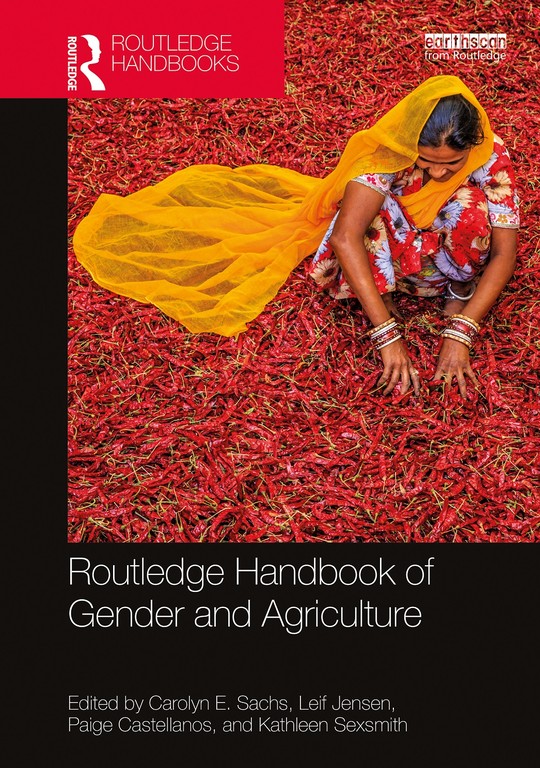
While women represent a significant portion of the global agricultural workforce, they face many roadblocks to success, including limited access to land, technological advancements, education and financing. They also often are excluded from household-level and policy decisions that determine their future.
These barriers, and ways to overcome them, are explored in a new publication, “Routledge Handbook of Gender and Agriculture,” co-edited by faculty in Penn State’s College of Agricultural Sciences.
The work is an outgrowth of the Gender Research and Integrated Training initiative, which is a collaboration between the college's Office of International Programs and the Consultative Group on International Agricultural Research, or CGIAR, a global consortium that unites organizations engaged in international research for a food-secure future.
The handbook is an essential reference volume for scholars, students and practitioners interested in gender and agriculture, noted Carolyn Sachs, professor emerita of rural sociology, who co-edited the book with SSRI Associate Director Leif Jensen, Paige Castellanos and Kathleen Sexsmith.
“Women comprise 43% of the global agricultural workforce,” said Sachs, referring to statistics from the Food and Agriculture Organization of the United Nations. “Though they are major contributors to producing food, their work is undervalued in many parts of the world. As gender scholars, we aspire to empower women, improve their opportunities, and elevate their status and self-worth.”
Sachs explained that gender relations in agriculture are shifting in most regions of the world with changes in the structure of agriculture, the organization of production, international restructuring of value chains, climate change, the global pandemic, and national and multinational policy changes.
More than 50 leading scholars, up-and-coming academics, policymakers and practitioners from around the world contributed to the handbook.
“Their research, theories and observations provide a very comprehensive, global view on gender and agriculture,” Sachs said. “Their contributions cover a broad range of issues and reveal the many differences between women in agriculture based on their race, ethnicity, citizenship, sexuality and age.”
Contributions are categorized in four sections: “Institutions, Markets, and Policies,” “Land, Labor, and Agrarian transformations,” “Knowledge, Methods, and Access to Information,” and “Farming People and Identities.”
Among topics covered in the book’s 33 chapters are gender inequalities in food standards; women’s right to their land; empowering women through farmer field schools; gendered vulnerabilities and adaptations to climate change; urban agriculture and gender, health and farm households; and gender, violence and food service workers.
The last chapter is an epilogue focusing on gender and shifting food systems during the novel coronavirus pandemic.
“The book was nearly finished when the coronavirus hit, but we felt we would be remiss if we didn’t address the gender- and food-system-related impacts of the COVID-19 pandemic,” Sachs said.
A call for submissions from researchers, development leaders, current and past graduate students, and partners at international nonprofits such as Oxfam and World Vision yielded inspirational stories from countries such as Nepal, Vietnam and the United States. The overwhelming response was the impetus for the blog, “Gender, Food, Agriculture, and the Coronavirus.” Essays from the blog will be featured in a future book.
“The work of the award-winning Gender Equity through Agricultural Research and Education team has become a signature initiative of the college,” said Deanna Behring, assistant dean and director of international programs in the College of Agricultural Sciences.
“I continue to be impressed with the faculty’s dedication to push the boundaries of gender and agricultural research, engaging partners around the world, carving out opportunities for student engagement, and moving the needle on the United Nations Sustainable Development Goals.”
More information about the book can be found at this link.
A virtual book launch is planned for 10 a.m. on Dec. 3. Those interested in attending can register at this link.